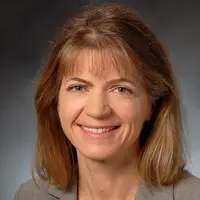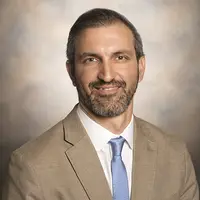An RTI Grand Challenge
Big data and artificial intelligence offer new ways to solve age-old problems, such as how to feed a growing population. Under our Grand Challenge program, RTI is funding research and analysis based on these technologies to promote agricultural resilience and food security in Rwanda.
Most of Rwanda’s crop production comes from smallholder farms. The country’s agriculture officials have historically had insufficient data on where crops are cultivated or how much yield to expect—a hindrance when planning for the future of their growing country. The government is looking to technology for a solution.
Building on our previous work with emerging technologies, machine learning, economics, and agriculture, we are developing a new decision-making tool that can be applied in Rwanda and beyond. In mid-2017, RTI’s top scientists awarded funding to this multidisciplinary project through the Grand Challenge initiative, which supports research that tackles significant problems facing society. The project, which touches on food security, sustainable use of resources, resilience to climate change, and the application of cutting-edge technology to fundamental problems, fits the program’s ambitious goals.
From Sensing to Action: Turning Satellite Data into Valuable Information
Traditionally, the best way to gather data on land use was to send surveyors into the field, measuring crops by hand. This slow, expensive process does little to accelerate the kind of comprehensive insight into crop health and potential yield that Rwanda’s leaders are seeking.
Fortunately, some key technologies that could make a difference are now relatively inexpensive and accessible. In early 2018, team members traveled to Rwanda to meet farmers, officials with the ministry of agriculture, and other teams working on agricultural initiatives and policy development. These meetings set the stage for the next step: collecting ground-truth data to train our machine-learning model to recognize Rwanda’s key crops, such as maize, beans, cassava, and bananas.
Working with a local business, Charis Unmanned Aerial Solutions, we flew unmanned aircraft equipped with sensors above farmland to collect images, including color photos and infrared profiles. Multiple drone flights provided us with images of different crops across agroecological zones and at different stages in the growing season. By correlating these images with publicly available satellite images of the same farms, we can identify and label crops. The hand-labeled images become training data for our machine-learning process.
Our model will learn how different crops appear in color, infrared profile, and other characteristics captured by the satellites. Eventually, we aim to create a system that can tell users how much land is devoted to each crop, how healthy the plants are, and how quickly they are growing.
In combination with seasonal agricultural survey, weather, soil, and other data collected by the Rwandan government, this raw data is incorporated into additional layers of analysis to become actionable information. Where should agricultural extension agents deploy their resources? Which farms would benefit most from fertilizers, irrigation, or erosion controls? Do the country’s farmers, as a group, produce enough calories and nutrients for the population? Which areas are most likely to experience food insecurity? Which areas and crops are expected to experience the largest impacts from climate change? The answers to these and other questions could strengthen Rwanda’s agricultural policies, expand its economy, and improve the lives of its people.
A New Understanding of Agriculture’s Potential
The Rwanda Grand Challenge draws on previous work and expertise in drone research, remote sensing, climate-smart agriculture, and economic analysis. It also benefits from our longstanding presence in Rwanda, where we have carried out, among other projects, a USAID-funded program that promotes private-sector agricultural enterprises.
In the second year of the project, we are concentrating on the machine learning portion of the process, testing and refining the model, and conducting integrated economic analysis of the potential tradeoffs and synergies associated with alternative programs and policies. Once perfected, our tools could be adapted and employed by any country interested in a more comprehensive understanding of its agriculture and land use and potential strategies for improving farmer livelihoods, agricultural sustainability, and food security. In addition, as countries around the world attempt to understand and prepare for a changing climate, informed decision-making will be vital to enhancing agricultural resilience. We believe our research will make these decisions smarter and more beneficial.
- RTI-funded
- Charis Unmanned Aerial Solutions





